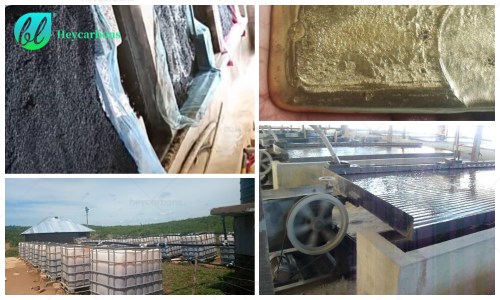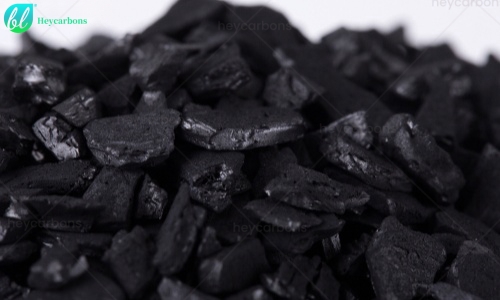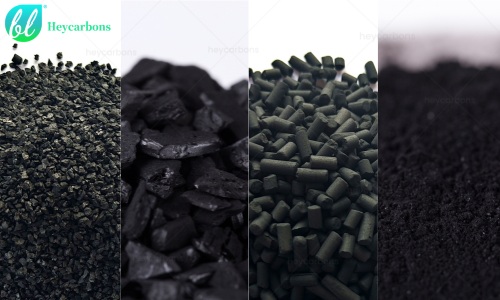1.Introduction to Activated Carbon in Gold Recovery
Gold recovery from ore is a complex process that involves several steps, and one of the most crucial components is activated carbon. Activated carbon is highly effective at adsorbing gold-cyanide complexes from a cyanide leach solution, making it an essential element in gold mining.
Coconut shell-based activated carbon, in particular, is highly favored due to its durability, high surface area, and hardness. Its microporous structure provides superior adsorption kinetics, allowing for more efficient gold recovery across a range of gold mining processes. Whether in Carbon-in-Pulp (CIP), Carbon-in-Leach (CIL), or Carbon-in-Column (CIC) systems, activated carbon plays an indispensable role.
2.Understanding the Coconut Shell Activated Carbon in Gold Recovery Process: CIP, CIL, and CIC
Gold recovery is often done through cyanidation, a chemical process where gold is extracted from crushed ore using cyanide. In the CIP, CIL, and CIC processes, activated carbon is employed to capture the dissolved gold-cyanide complexes. Here’s a breakdown:
– Carbon-in-Pulp (CIP): In this method, the activated carbon is added after the gold ore has been leached, allowing the gold to adsorb onto the carbon as the pulp moves through the tanks.
– Carbon-in-Leach (CIL): Similar to CIP, but in CIL, the activated carbon is introduced before the leaching process. Gold is both leached and adsorbed simultaneously.
– Carbon-in-Column (CIC): Used for heap leaching operations, the gold-laden solution is passed through columns packed with activated carbon, allowing for adsorption without the need for agitation.
3.The Properties of Coconut Shell Activated Carbon and Why It’s Ideal for Gold Recovery
Not all activated carbons are created equal. Coconut shell-based activated carbon is ideal for gold recovery due to its specific properties:
– High hardness and low attrition: Reduces the loss of carbon particles during handling and adsorption cycles.
– Microporous structure: Provides a high surface area for maximum adsorption capacity.
– Uniform particle size: Ensures consistent adsorption kinetics and reduces clogging in the recovery system.
4.Maximizing Adsorptive Capacity and Gold Recovery Efficiency
The efficiency of gold recovery is largely determined by the adsorptive capacity (K-value) and adsorption rate (R-value) of the coconut activated carbon. Higher K-values indicate a greater capacity to load gold onto the carbon, while higher R-values ensure faster adsorption. The following factors influence performance:
– Particle size distribution: Smaller particles increase surface area but may lead to clogging.
– Mechanical strength: Prevents attrition during continuous use, ensuring a longer life span for the carbon.
5. The Importance of Regeneration: Sustainability in Gold Recovery Using Coconut Shell Activated Carbon
Activated carbon’s ability to be regenerated makes it an eco-friendly option for gold recovery. After adsorption, spent coconut shell activated carbon can be regenerated through thermal or chemical processes to remove contaminants and restore its adsorption capacity. Rotary kilns are often used for this purpose, allowing the carbon to be reused in the same process multiple times.
The environmental and cost benefits of regeneration include:
– Reduced operational costs: Decreased need to purchase new carbon.
– Lower environmental impact: Fewer carbon disposals reduce waste.
6.Overcoming Challenges: Attrition, Gold Losses, and Maintaining Coconut Activated Carbon Quality
One of the major challenges in using coconut activated carbon for gold recovery is attrition, where carbon particles break down into smaller pieces, leading to reduced adsorption efficiency and increased gold losses. Ensuring high-quality activated carbon and regularly regenerating it helps maintain performance and reduce losses.
To minimize these issues:
– Select carbon with high mechanical strength: Reduces particle breakdown.
– Monitor gold loading and attrition rates: Ensures early detection of performance declines.
7.Innovations in Coconut Shell Activated Carbon for Gold Recovery
As technology advances, new forms of coconut shell activated carbon, such as carbon nanotubes, are being explored for their potential to enhance gold recovery. These materials offer higher adsorption efficiency and reduced operational costs compared to traditional coconut shell carbons.
Other innovations include:
– Improved adsorption kinetics: Faster recovery times with less carbon required.
– Nanotechnology: Potential for smaller, more efficient adsorbents.
8. Environmental Impact and Regulations: Sustainable Practices in Gold Mining
The use of activated carbon in gold recovery not only enhances efficiency but also contributes to more sustainable mining practices. Mines can reduce their environmental footprint by:
– Implementing carbon regeneration: Minimizes waste and raw material usage.
– Complying with environmental regulations: Reduces harmful cyanide residues in waste streams.
9. Case Studies: Success Stories in Gold Recovery Using Coconut Shell Activated Carbon
Several gold mines around the world have successfully implemented coconut shell-based activated carbon in their recovery processes, achieving higher gold yields and reducing operational costs. These case studies highlight:
– Enhanced adsorption rates: How using high-quality activated carbon has improved recovery.
– Sustainability practices: Implementing carbon regeneration to reduce costs and environmental impact.
10. Conclusion: The Future of Gold Recovery with CoConut Activated Carbon
As we look toward the future, it is evident that activated carbon will continue to play a vital role in gold recovery processes. The use of coconut shell-based activated carbon has revolutionized the industry by providing a durable, cost-effective, and environmentally friendly method for recovering gold. Advances in technology and innovation promise to further improve the efficiency of gold recovery, ensuring that mines can maximize their yields while reducing environmental impact.
Key Takeaways
– Coconut Shell Activated Carbon: Due to its superior hardness, microporous structure, and low attrition rates, coconut shell activated carbon is the preferred choice for CIP, CIL, and CIC processes.
– Process Efficiency: Mines can optimize gold recovery by selecting activated carbon with the right adsorption properties, ensuring efficient operation and cost savings.
– Sustainability: Regenerating activated carbon significantly reduces costs and the environmental footprint of mining operations, contributing to more sustainable practices.
– Future Innovations: Emerging technologies like carbon nanotubes and nanotechnology may lead to even more efficient gold recovery methods, offering faster adsorption rates and reduced material losses.
As the demand for precious metals continues to grow, innovations in activated carbon technology will remain crucial for the mining industry. By embracing these advances and focusing on sustainability, mines can achieve higher efficiency and profitability while also fulfilling their environmental responsibilities.
learn more:






